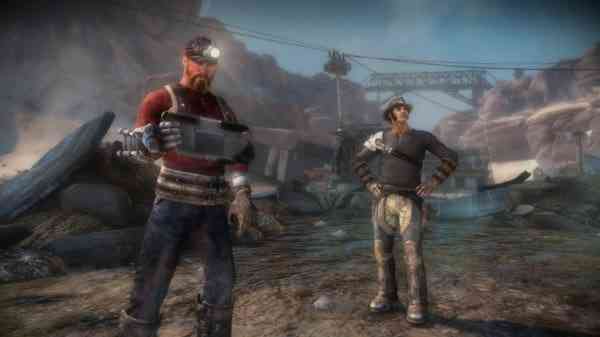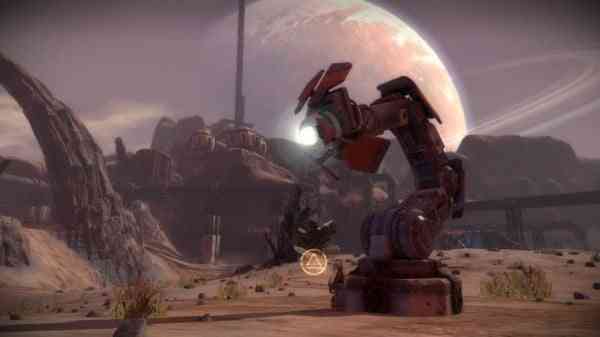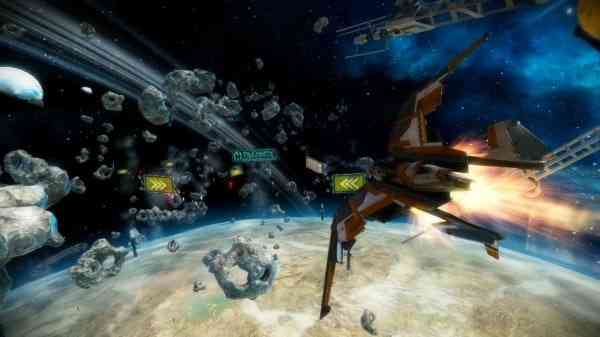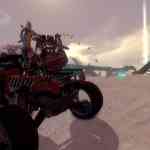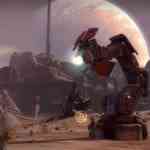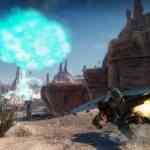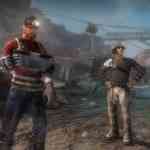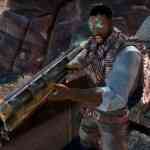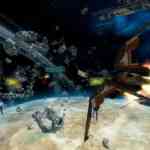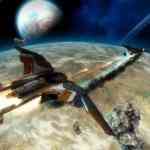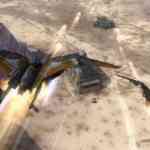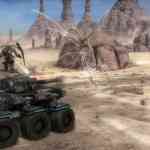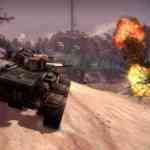In 2007 a game called Warhawk was released on the still relatively new PlayStation 3. Entirely multiplayer based, Warhawk featured a combination of on-foot and vehicular gameplay that had not been seen on the Playstation 3 before. Warhawk was well received by critics but it didn’t really capture the attention of gamers beyond more than that of a cult following. Five years later a sequel has arrived in the form of Starhawk. It is a title with a real time strategic element that is blended into the shooter action that originated from the first game.
While its predecessor was entirely a multiplayer-only experience, Starhawk features a full single player campaign. Fans of the first game need not worry though as the focus is still on the multiplayer arena. That being said, Starhawk’s campaign revolves around the quest of space faring humans to mine a resource called Rift Energy and how the lives of two brothers are affected in different ways by this valuable resource. The family angle of the story is ambitious but the character development is pretty weak and the campaign never really reaches that level where you feel compelled to play to further. Rather, the single player serves as a primer for where the real action is, and that is in the multiplayer.
At first glance the multiplayer might appear to be standard fare as the adversarial modes are not anything new. You have your Deathmatch, Capture the Flag and Territory variants and that’s about it. The gameplay itself is an interesting combination of third person shooter action and real-time strategy. The strategic part of the multiplayer action is where Starhawk really differentiates itself from being just another third person shooter that has some vehicles. The developers have included what they call the “Build and Battle” system. This allows players to place strategic offensive and defensive structures right into the gameplay. These can be towers to help with sniping adversaries from long range to walls strategically placed to block certain paths in a game of Capture the Flag. This goodness isn’t free of course. Players must spend Rift Energy in order to erect them. Rift Energy can either be collected around the map or accumulated as enemies are killed.
This may be a bit of a vague reference for some, but this strategic element of placing elements into the battlefield to aid your cause feels akin to an early Xbox 360 release called The Outfit. Need a forward point to resupply ammo or a turret to defend your flag? You got it. Instead of littering a map with “power” weapons like rocket launchers and sniper weapons, these types of weapon abilities are tied to the structures you build. Players are free to choose to their own fancy too. I am not a fan of the ‘race to control power weapons and spawn points’ in some games, so this new system is a welcome game mechanic and makes for quite a unique multiplayer game with what feels like limitless possibilities.
The “Build and Battle” system is pervasive throughout both the single and multiplayer modes but it works best online with friends in either the adversarial modes described above or the cooperative play. Co-op mode supports up to four players and the goal is to defend areas from waves of enemies. Think of it as Horde mode from Gears of War combined with tower defense elements. There are plenty of Horde mode variations these days but this is one of the fresher takes on it.
This all makes for some pretty fast game play. Fast and RTS typically aren’t two words I would put together, but after you get past the initial learning curve with the controls things flow pretty smoothly. The “Build and Battle” system is simply implemented through the use of a radial selection menu that allows you to quickly build structures and stay in the action. I am generally not that big of a fan of the PlayStation controller as I generally find it a little too small for my hands and it feels loose for shooters, but here the controls are quite good whether you are playing on foot, driving one of the land vehicles, or soaring above the battlefield in a Hawk
The only potential issue I see with the “Build and Battle” system is finding the right people to play with that are going to embrace the system for the strategy it can provide. Inevitably there are always those players who just want to shoot, shoot, shoot and level up their characters with little regard for team play. With the right amount of coordination the right team members that play together frequently can be quite deadly.
In terms of visual presentation Starhawk fuses sci-fi with cowboy western aesthetics. It is an interesting combination and while I didn’t expect it to, it works well. The environments range from dusty desert-like areas that you would expect in a western to space stations and asteroids orbiting planets. It all makes for a great sense of scale and a key to that scale is a good draw distance and solid frame rate. Add in a good amount of character and environmental detail, along with lots of special effects, and I consider Starhawk to be a pretty good looking game.
Far and away the best part of Starhawk’s sound is the musical score. It is excellent. Various musical cues bring the western theme to life and overall the music has an epic cinematic feel to it. While the myriad of sound effects are great, where things fall short is the voice acting. It feels out of place, uninspired, and even a bit cheesy. Cheesy often works but not here. As a result it does not fit with the rest of what Starhawk offers in the audio department.
I’ll be honest here; you are not going to be picking up Starhawk for the single player alone. Multiplayer is king here and the strategic elements of building structures to help your cause add a depth that is typically not seen in many shooters. In order to get the most enjoyment out of this game you are going to have to find and stick together with good set of teammates to truly take advantage of the strategy that is offered. That’s not always the easiest thing in the online world though. At the end of the day, in a world overpopulated with typical shooters, Starhawk’s unique approach makes it a worthy candidate for your money.
